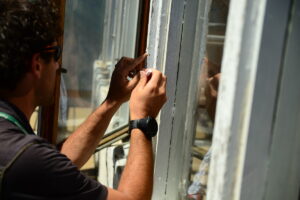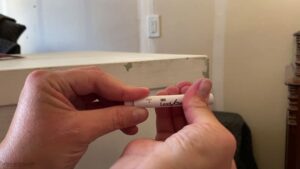Do you own or manage a commercial property? Whether you are renovating or renting, it’s crucial to understand the type and condition of the paint used. Lead paint testing services let you know if your building contains lead-based paint. But what if it does? Well, lead poisoning poses a major health hazard to anyone exposed to it.
In case your property tests positive for lead, the next step would be lead abatement. This is the process of safely removing or containing lead paint.
In this blog, you will learn what lead paint exactly is, how you can identify it and what are the next steps if you have it in your commercial property.
What is Lead Paint?
Lead paint is as simple as it sounds – paint that contains lead. Lead is a toxic metal that can cause serious health issues. It was a popular ingredient in paint until its hazards were discovered. It was used because it made the paint more resistant to moisture and wear, and the colors more vibrant.
Why do Lead Paints Exists When it is so Harmful?
Well, lead makes paint more durable. Unfortunately, its durability came at a cost. Lead paint poses significant risks when it starts to peel, chip or deteriorate. Exposure to small amounts of lead dust or chips can cause damage to the brain, kidneys or nervous system of anyone.
However, lead paint isn’t always dangerous. If it remains intact and undisturbed then it isn’t an immediate threat, and you have nothing to worry about. On the other hand, The real danger is when you notice the surface beginning to break down or if the renovations on your commercial property disturb it.
Why Lead Paint Testing is Essential
If your commercial property is older, it may contain lead paint, especially if it was constructed before lead paints were banned. If you don’t get lead paint testing, then the lead will lead to contamination and cause dire consequences for both adults and children who use the property frequently.
Symptoms of Lead Poisoning
Lead poisoning can be incredibly harmful, and its effects are often irreversible. Early symptoms include:
- Developmental delays
- Loss of appetite
- Abdominal pain
- Weight loss
- Vomiting
In severe cases, lead poisoning can lead to seizures, coma, or even death. This is why lead paint testing and removal is non-negotiable for older commercial and residential buildings.
How to Spot Lead Paint on Your Commercial Property?
You can not know if your property has lead-paint just by looking at it. Lead paint could be hiding behind new paint or plaster. If you think your property is in good condition, chances are it’s still at risk for lead paint. Following are some lead paint testing methods:
- At-Home Test Kits for lead-paint testing are available, but they are not the most reliable method.
- Professional Inspection is ideal for those who require a more accurate assessment. Certified professionals conduct a full risk assessment for lead paint and they follow regulated procedures, such as sampling and testing in the lab.
Lead Paint Removal Options
Once lead paint has been identified, it’s time to decide how to handle it. There are a few ways you can go about it and it all depends on the condition and location of the paint and your property. Let us explain.
1. Encapsulation
Encapsulation means to apply a special coat over the lead paint to seal it to prevent it from further exposure. This method is effective for low-traffic areas but might be the best for commercial buildings with heavy use.
2. Enclosure
Similar to encapsulation, enclosure offers lead-paint containment. The lead-paint surfaces are covered with new materials, such as aluminum or drywall. However, this is only a temporary fix as the lead paint is still underneath the new surface.
3. Removal
This method should only be handled by certified professionals as they have the proper equipment to remove the paint safely without releasing harmful lead dust in the air. Professionals remove the paint physically and during the process keep the surface wet to avoid the spread of lead particles.
4. Replacement
If lead contamination seems extensive in your commercial property, replacement might be the next best option. This method involves removing the affected building elements (such as windows, doors, or walls) entirely and replacing them with new, lead-free materials. Although this method is the most expensive, it ensures complete removal and peace of mind.
Also Read: What Should I Do If My Home Fails a Lead Inspection?
Protecting Your Property from Lead Paint Hazard: Hiring a Specialist
Can you tackle lead paint removal yourself? Technically, yes. But should you? Probably not. Lead-paint testing and removal is not a DIY job. The risks and costs significantly outweigh the benefits.
Avoid the risk of lead poisoning and invest in a long-term safety and compliance of your commercial property
Instead, hire us! Manhattan Lead are professional lead-safe contractors and we adhere to all rules and protocols, ensuring the job is done right the first time around.
Seeking expert help? Contact Manhattan Lead for end-to-end solutions for lead paint removal in commercial and residential buildings.




